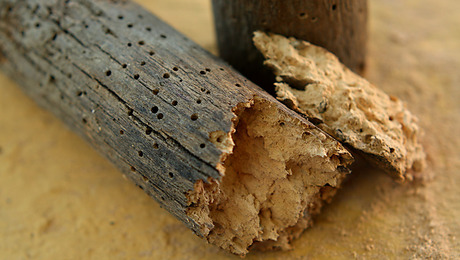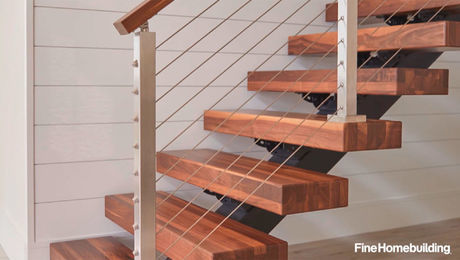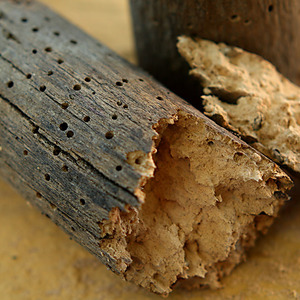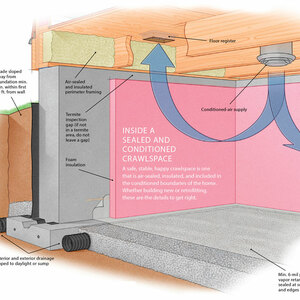Bath exhaust through cantilever rim joist
This builds on the conclusion of
bath exaust through 2X10 rim joist (post #100240)
That post concludes:
The hole cutting rule does not apply to rim joists since they rest CONTINUOUSLY on an exterior wall. They do not carry weight like a regular joist, their main purpose is to align and hold vertical the joists that are fixed to them, and provide a solid continuous nailer for the subfloor, and wall plate above.
For completeness of the quote, the hole cutting rule referred to is: a hole in a joist may not exceed 1/3 of the width of the joist (9.5 inches in that posts’ case), the closest support must be closer than 1/3 the distance between the two supports of the joist, and the hole cannot be closer than 2 inches to the top or the bottom of the joist.
However, my 1968 house has a twist: The rim joist is cantilevered over the supportting exterior wall several inches and is a 2×8 (as are the floor joists that terminate on it). The lower wall (providing the exterior to the bathroom I am remodeling) is brick facade and the upper wall (which is the second floor) is masonite siding. The cantilever is sufficient for the top floor to cover the top of the brick facade of the first floor. I would like to cut a 4 and 1/4 inch diameter hole, but could settle for a 3 and 1/4 inch hole, though it would still violate the requirement. Smaller than 3 is too small to be practical for a fan.
So, I wonder if the above answer could still apply, allowing me to put in the 4 and 1/4 inch hole, or should I consider my situation to be governed by the non-rim joist rules, which would allow for no hole?
Thanks!


















Replies
A rim joist ...
A rim joist is a rim joist. A rim joist in a standard application or in your cantilever application is not load bearing. Sure, if you were to drill massive holes in EVERY joist bay, you migh have a problem with your joists rolling over, but to completely cut away one bay's worth of rim josit would not be a problem. Drill away.
Ok, now for the blast of "YOU BETTER GET A STRUCTURAL ENGINEER".